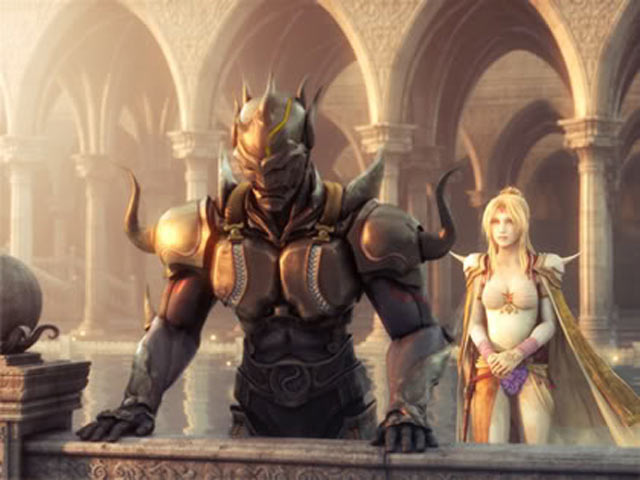
Why does Square Enix keep rereleasing the old Final Fantasy games? The first one came out in the U.S. twenty years ago, and yet it and its five NES and SNES sequels keep popping up in anthologies and remakes. Just when you think you won’t see one again, there it is in a new format or on a new system, and people still buy it, even when they’ve been getting multi-million, modern sequels far more technologically advanced and epic than how the series began.
Are we gluttons? Amnesiacs? …Nah.
Some of us don’t need the splashy HD pyrotechnics, swooning, licensed ballads and endless cinemas that Final Fantasy offers today. There’s charm and character galore in the originals, and there are perhaps even more impactful stories, because Square was forced to be selective and make the most of minimal resources. Text box character limits, 8-voice synthesizers and 8 bits of color. Gorgeous character art from Yoshitaka Amano simplified to a small grid of squares. Nobuo Uematsu’s moving and catchy soundtracks reduced to bleeps. It all worked, because, much like a book, the NES and SNES games required more active imagination and engagement from players. Some blanks had to be filled in. Some quests were open to interpretation. When cruddy localization got in the way, we even had to ponder the appropriate translation, or memorize the bad “Engrish” to joke with friends.

With the move to PlayStation, Square was afforded vaster resources and could more fully display its artistic vision. The step forward was similar to the transition from black and white films to color– if only on the sensory overload perspective. Multiple discs were crammed with movies, soundtracks and textures. The story became more intricate, and, increasingly, more and more on rails. With each numbered-sequel Final Fantasy created from VII on, the walls began to narrow in on the player, if subtly. Fewer characters could be renamed, and fewer journeys could be taken off the beaten path, foolhardy or no. There was an abundance of side quests, perhaps too much, in VII, and that continued for awhile, but XIII is representative of Square’s new vision. After XII‘s release, fans were told that was the end of old Final Fantasy as they knew it, and XIII would be the new vision.
XIII‘s world has proven to be an explosion of excess and restraint all at once. Excess in that not one but three correlated games were announced, years before they released– and this announcement was made after mediocre reception to several other spin-off sequels to the main numbered series. And then there was the restraint– no free roaming in the world, let alone choosing your own party members, until the last 20% of the game. There aren’t even towns to explore: just a straight path from A to B. This is the new Final Fantasy: one in which choreographed cinemas and an ever-rigid story take priority over the initial wonderment and exploration of the series’ beginnings. It’s more an experience than a game; it’s more “sit back and let it wash over you” versus “lean forward and get into it.”
That’s not necessarily bad. For some folks, the new XIII is fine, and the sales of the game prove that. There’s beautiful eye candy to be seen, and those fond of the telenovela-styled melodramatics will find plenty to cringe and swoon to. For those of us not as addicted to overkill, and those who got started on this series 20 years ago, though, the classics are still where it’s at. And we wouldn’t mind getting back to that, even if it can only be in a remake.




 ShareThis
ShareThis







I agree that the I – VI of Final Fantasy are the best of the numbered games. The rest are great games, but it’s the good ol’ days which have me firmly. There is something to say for the eye candy & ease of todays FF games, but the awesome joy which lies within the older FF games outweighs it by far. Even when they added FMV’s to the releases of the older games, that was even cooler! To see the old characters in short FMV’s, brought to life!